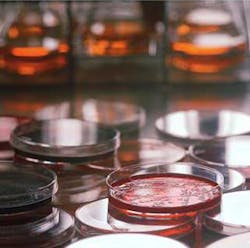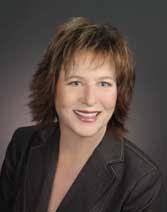It's a bug's life: A look at microbial challenges that have shaped today's practice of dental hygiene
Betsy discussed our current understanding of oral microbial dynamics, and how they have radically evolved during the last few decades. As a result, dental hygienists have a responsibility to stay current on the latest research developments as they practice evidence-based care.
This will enable us to improve professional delivery of periodontal therapy and provide home care recommendations suitable for microbiological control of periopathogens. Betsy’s course provided us a closer look into the world of oral bacterial biofilm, and the impact current research will have on future delivery of dental hygiene care. It was pretty darn entertaining, too!
The session started with a historical look at plaque, and how historical concepts of microbial function have evolved into a broader understanding of how oral biofilm functions. The old adage “It is plaque MASS that overwhelms the body’s ability to control detrimental effects to the oral cavity”, and the dogma that all bacterial deposits had equal potential to induce disease, were dispelled by Betsy. It is no longer one size fits all, or one organism = one disease.
We have come to know dental bacterial plaque as a biofilm. Betsy honored the memory of Dr. John William (Bill) Costerton, the Father of Biofilms, who passed away last year. Dr. Costerton was director of the Biofilm research at the Center for Genomic Sciences in Pittsburgh. Betsy compared bacterial dynamics between planktonic and biofilm microbes. Biofilm bacteria demonstrates unique traits not seen in planktonic ("free floating") bacteria. Plaque biofilm demonstrates unique communal traits, such as "self-sustainability" and "inter-species communication." Bacterial Quorum Sensing (‘QS’) utilizes molecular signals such as competence stimulating peptide ("CSP") and autoinducer-2 ("AI-2") to organize into diverse biofilms. "Healthy dental plaque biofilm" is predominantly composed of commensal ("symbiotic"), non-pathogenic microbial members and contributes to the development of a healthy immune system while minimizing oral inflammatory reactions. Pathogenic biofilm is difficult to control through the use of antimicrobial agents due, in part, to bacterial survival mutations. Most microbes killed with antibiotics, antibacterials, and other measures are commensal, the organisms that survive are less diverse and more pathogenic.
Next, Betsy discussed dietary impact on oral biofilm. As human society shifted from hunting and gathering to farming, changes associated with an increase in grain consumption was reflected in the composition of bacterial plaque biofilm. In medieval times during the Industrial Revolution, another shift in oral bacterial plaque composition occurred, which resulted in less biodiversity and the prevalence of pathogenic bacteria.
Treatment strategies were discussed, and Betsy stressed "biofilm control" versus "bacterial elimination." In other words, shear force and bacterial biofilm control. Treatment strategies and home care recommendations designed to promote a "healthy," diverse oral bacterial population should be implemented.
Thanks Betsy, for your informative and always entertaining presentation!











